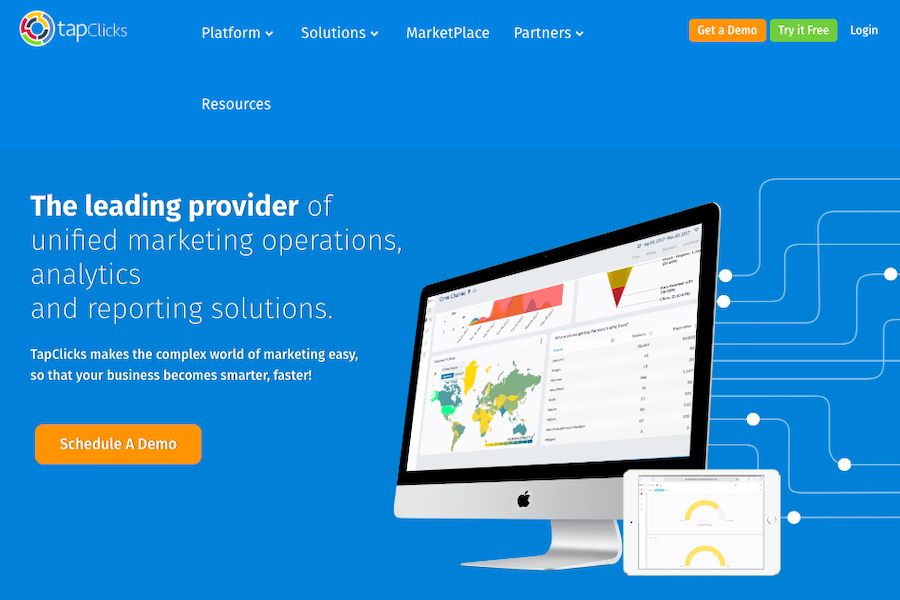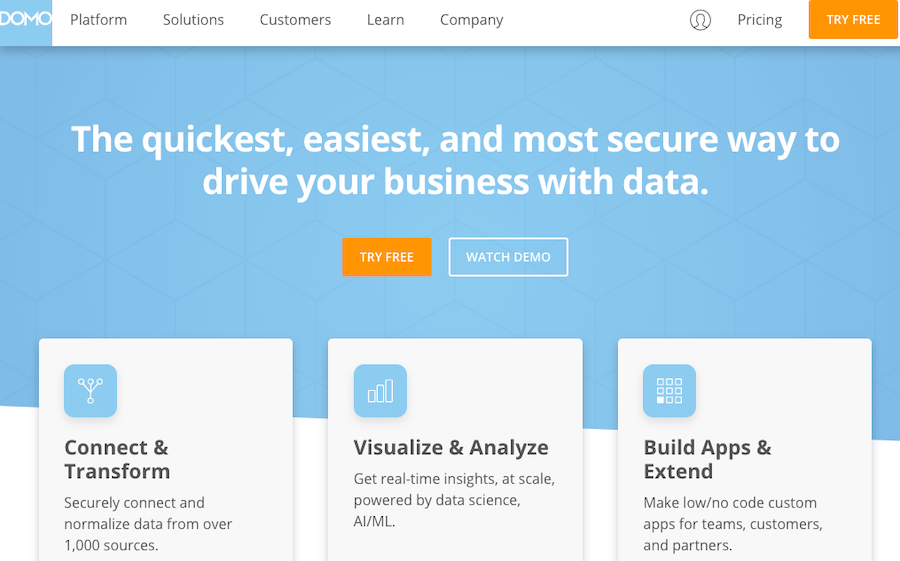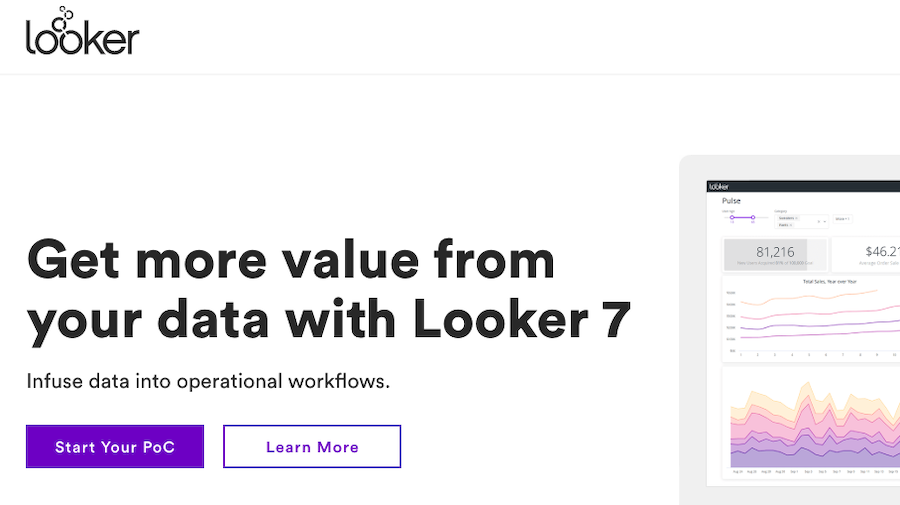There are inflection points along the path of scaling a digital marketing agency that require increases in efficiency to continue driving results for your clients as you grow. It's during these times that we see agencies looking to invest in marketing operations or performance management platforms.
It doesn't take long in research mode to find that there are many options on the market, and we understand it's challenging to sort through them and figure out which tools are right for your business.
To help you decide on which performance management system is best for your agency, we've prepared an in-depth comparison of three top performance management tools for marketing agencies:
In this article, we cover the main features of each service (as well as critical differences between the platforms), detailing their particular features and benefits, and make our recommendations throughout.
Note: Since we're writing about the difference between our service and someone else's, we brought in a writer to evaluate all three platforms. He's done his best to present the information as evenly as possible because we want you to make an informed decision. That said, we think we offer the best marketing operations toolkit for agencies. Want to give TapClicks a try? Get started with a 14-day free trial here.
Below, we take a deep-dive into the features and functionality of each performance management tool.
Domo vs Looker vs TapClicks: Platform Overviews (and Key Differences)
The differences aren't just in the features offered but in the mindset of how the platforms were designed.
TapClicks
TapClicks is an all-in-one, enterprise-level performance management tool, made to help marketers and marketing agencies. It features hundreds of marketing data connections, that can be set up in seconds (sign up, connect to the channels you're using, and start analyzing data). The reports are easily shareable (can be set to auto-send on specific days), and workflow is streamlined (as we go over below, you can create business hierarchies in the platform and automate the delegation of tasks to specific employees).
TapClicks works well with both small businesses and large enterprises, with an intuitive design that helps its end-users make better business decisions for marketing performance optimizations.
Domo
Domo positions itself as a fully-mobile, cloud-based system that works to take all aspects of your business and makes it so you can manage from your iPhone. Designed to be mobile-first (for both iOS Apple and Android), Domo works like TapClicks, to streamline your data, present compelling visualizations, and allow for real-time collaboration in the platform.
Domo isn't set up with a marketer's mindset. Because of that, it doesn't carry some of the key features which make TapClicks advantageous to agencies, such as factoring in margins and markups in reporting, coming with hundreds of marketing connectors, and the ability to have custom-made channels, allowing you to build advertising and marketing packages for your clients.
Looker
Looker is a business intelligence software and big data analytics platform. Unlike TapClicks and Domo, Looker relies on LookML, a modeling language for data relationships in a SQL database. There are pros and cons to LookML. Looker lends itself to advanced analytics, enabling organizations to extract the query logic behind their analyses, making their analytics easy to manage and thus scalable. But these extra features might end up making Looker too labor-intensive, and the wrong fit for your marketing agency.
When considering Looker, ask if your focus is client retention, developing and analyzing marketing strategies, and streamlined workflow (not necessarily Looker's strengths) or if your focus is more on a deep-dive into data analysis, business intelligence, and scalability of processes (areas in which Looker excels).
How Marketing Agencies Can Use TapClicks as a Performance Management Tool

TapClicks's platform can be segmented into four components: TapOrders, TapAnalytics, TapReports, and TapWorkflow. While separate, each component works together to create a performance management tool that can be used by marketing agencies to streamline communication, centralize data, show results, and influence the next steps in your marketing strategy.
TapOrders
TapOrders automates your order (campaign) entries, which means you can create orders that show the specific purchases your customers are making. This is an excellent tool for letting sales teams see which services are underperforming. (If using a CRM system like Salesforce, it's easy to set it up so data is imported from Salesforce into TapOrders.)
Another plus is that TapOrders can integrate into your current billing system (or you can use TapOrders as your billing system interface). It allows you to create a margin-focused product catalog (a great benefit for agencies looking to upsell services).
TapAnalytics
TapAnalytics allows you to easily view all your marketing campaigns and analyze their performance through a unified dashboard. If needed, you can import data from existing spreadsheets to help visualize data you may have stored off-site.
Think of TapAnalytic as a strategic advisor to your existing strategies use your client's unified data to notice spikes, anomalies, and overall trends. Through TapAnalytics, TapClicks makes it easy (and quick) to respond to key wins and losses and set early warning signals to alert your team when needed.
Through TapAnalytics, you can also:
- Create Custom Dashboards (Note: This is only available in the Elite packaging, and if you're ready to consider pricing and options, jump to our section on pricing overview).
- Set up Calculations and Custom Metrics. Not every business is chasing the same metric. TapClicks lets you create calculations and custom metrics to cater to your client's needs.
- Segment Data into a Specific Channel: This is a great feature for regional areas within a larger company or even specific areas within the same business.
- Recreate the Hierarchy of Your Business: First, scale up to virtually unlimited users (TapClicks can grow with your agency) and then create specific roles and structure which match the way you run your business in the day-to-day.
Analytics isn't all you need the data needs to be easily shareable (and catered towards insightful interpretation).
TapReports
TapReports allows you to take the work your agency has done, the results you have achieved, and share it with your team and clients. Export reports to your clients through email, Word, Excel, PPTX, or PDF. Through TapReports, data becomes more visually engaging and thus, more revealing. It's easier to see opportunities when they aren't confined to rows and columns on a spreadsheet but presented in graphs, pie-charts, and other engaging visuals.
You can schedule recurring reports (and designate who you want to receive them). You can also set alerts for early warning signals, spotting if a certain metric goes too low or a particular cost goes too high.
Through TapReports, you can also:
- Factor in Markup and Margins: Add your service charge to client campaigns without the awkward conversation. This gives you the flexibility to change costs per client and per service. In the end, your clients only see the final cost to them in their dashboards.
- Create Unique Channels: Use channels to group marketing tools and combine data. For example, say your agency is using both Google Adwords and Bing Ads, but you want to show your client their overall combined performance. Simply combine data from both tools into one custom channel, where the metrics from both tools are streamlined. (Plus, take this feature a step further and create custom channels that reflect the mix of services/advertising packages your agency offers.)
- White-Label Your Reporting: You can create custom-branded reports with your logo and unique metrics. This maintains brand identity while helping your clients associate your marketing strategies with your agency.
TapWorkflow
TapWorkflow, the final piece of the TapClicks performance management platform, automates a significant part of your day-to-day manual tasks, allowing you to focus more on creative solutions and less on writing emails and holding meetings. TapWorkflow does this by automatically routing tasks based on established business processes.
Say there is a dip in CTR on a Facebook Ad campaign. Instead of having to look at the data, interpret the data, and send a message in regards to the drop in percentage, TapWorkflow designates the task to your designated point person running Facebook Ads.
In TapWorkflow, you can also:
- Log Your Hours: Keep track of your hours, whether for internal benchmarking or sending billable hour reports to your clients.
- Minimize Double Work: Clear the headache of checking Slack to check Trello to be reminded of the new strategy as referenced in last week's email thread. Use notes in TapWorkflow to have consistent, up-to-date information (with an audit trail so you can view changes).
How Marketing Agencies Can Use Domo as a Performance Management Tool

Like TapClicks, Domo is looking to make it easier for companies to unify data, create visual layouts, and more. Regarding the involvement required from an agency to start-up and begin using reports and other features, Domo is more labor-intensive than TapClicks, but not as labor-intensive as Looker.
Domo has over a thousand pre-built connectors (from Facebook Ads to Salesforce to Google Drive to Google Analytics to JSON, and many more) to help you integrate your diverse list of data sources. Plus, you can bring in data from your on-premises systems, flat files, or your company's proprietary systems.
A major feature unique to Domo is its bi-directional data, where Domo serves as the hub between two systems, instead of an endpoint for data. But if we are focusing on presenting data to clients (and using data to improve client retention and monitor marketing campaign performance), your agency may not need bi-directional data functionality. However, if bi-directional data capabilities is a big win for your agency, then Domo is definitely worth considering.
To help with hitting your benchmarks, your agency can set up Domo alerts. This way, when revenue falls below a certain threshold, or you exceed a sales benchmark, you and your team are immediately notified.
With Domo, you can also:
- Utilize apps that are unique to your business needs. You can either build your apps (with your dev team) or work with Domo to build custom apps based on your data.
- Present your data in Cards' (on your dashboard) with a simple drag and drop interface. To create a Card', choose a source of data, such as sales metrics found in an excel file on your desktop (Domo recommends visualizations based on your imported data, but this can be switched for your preference).
- Use Domo Buzz to create seamless collaboration directly in Domo (minimizing cross-platform chatter).
- Ask Domo questions in natural language and get responses based on your data.
- Utilize artificial intelligence, such as machine learning and predictive analytics, to get more advanced analysis and make strategic business decisions.
How Marketing Agencies Can Use Looker as a Performance Management Tool

Depending on your needs as an agency, Looker may significantly increase your insights into data, or it may be overkill, causing you to drain labor hours on back-end upkeep.
The first thing to know about Looker is that it's a data-discovery platform that relies on LookML, Looker's proprietary, modeling language for describing dimensions, aggregates, calculations and data relationships in a SQL database.
How Looker works in a nutshell: Looker takes your raw data, and runs it through any SQL database (Note: Looker only supports SQL databases). From there, LookML is applied to the data, transforming into a tool that can be used and manipulated to create data visualizations.
The focus of Looker seems to be on the first part of this process (applying LookML to raw data run through a SQL database). From there, employees can use the information to perform intricate and involved data analysis.
If choosing Looker, make sure your agency has IT support or a team of dedicated data analysts who can manage your platform. Otherwise, you won't get the results you need.
With a dedicated team of analysts, your agency can use Looker to build multi-layered analytics for a client and then allow your marketing specialist to create customized reports as necessary.
With Looker, you can:
- Connect to 50+ SQL databases, such as Redshift, Snowflake, Amazon Athena, and Microsoft Azure SQL Data Warehouse.
- Utilize row-level detail to drill through charts and gain a deeper understanding of your business.
- Use filters to let your employees see a dashboard pertinent to their role. This way your customer service managers and your sales rep can look at the data relevant to their role.
- Develop any visualization using JavaScript to create custom visualizations based on your unique business.
Pricing and Available Plans
All three of the platforms offer custom pricing based on your company's needs. While this can help make sure you're only spending what you need, it also makes it a little difficult to compare pricing across these performance management tools.
TapClicks Pricing and Available Plans
TapClicks offers their services in packages, as well as segmented by need.
TapClicks offers straight-forward reporting dashboard software, available in a Pro, Enterprise, or Elite Plan.
TapClicks also offers an Order and Task Management system (consisting of only TapWorkflow and TapOrders).
And, as we covered above, TapClicks offers a complete Marketing Operations Platform (consisting of TapOrders, TapAnalytics, TapReports, TapWorkflow).
To get a quote for any of these services, reach out to TapClicks directly.
Domo Pricing and Available Plans
Domo pricing tiers are available online, but they come from third-party review sites and may not be accurate.
Based on their site, Domo pricing is based on key indicators such as data storage, data refresh rates, the volume of data queries, and the number of users.
For an accurate quote, reach out to Domo for a consultation.
Looker Pricing and Available Plans
Like the other two platforms, Looker does not provide readily available public pricing. However, they offer custom quotes based on your needs. Some factors they consider when coming up with a price include:
- Types of users (how many viewers needed vs. how many editors)
- The number of database connections required
- The scale of the deployment
According to a third-party site, Looker's pricing starts from $3000-$5000 a month for 10 users, but again, a third-party site may not have the most reliable information.
Which Performance Management Tool is Right for Your Marketing Agency?
As we detailed above there is significant overlap between the services each platform offers. Domo, Looker, and TapClicks all work to unify data, allow for analytics, and turn data into compelling visuals to help companies pin-point wins and losses, but they get there in very different ways.
The main question to ask before picking a platform is: what does my agency need from its performance management tool?
We hope the information above was helpful in figuring out which performance management tool is right for your agency. If you want to give TapClicks a try, get started with a 14-day free trial here.